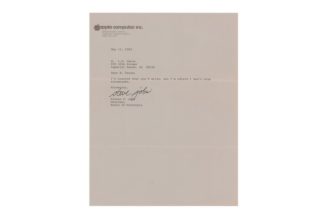
The future of America’s electricity grid hangs in the balance as Democrats try to salvage their giant environmental and social spending bill. After West Virginia Sen. Joe Manchin imperiled Democrats’ Build Back Better bill — which would have transformed the grid and helped stave off catastrophic climate change — environmental advocates are figuring out a plan B.
The most recent version of Democrats’ environment and social spending bill included $555 billion to tackle climate change, which would have been the biggest US investment ever on the crisis. At the heart of the bill was a plan to wean the power grid off fossil fuels. But over the weekend, Manchin (who has earned millions off investments in coal) seemingly killed those plans by saying he would vote with Republicans to block the bill, denying Democrats the 51-vote majority they needed in order to pass it. Manchin’s surprise announcement came after months of negotiations that have already whittled down climate provisions.
President Biden has pledged to cut US carbon emissions in half this decade compared with 2005 levels, and transform the electric grid to run entirely on carbon-free energy by 2035. Many experts considered the policies laid out in the Build Back Better plan critical to meeting those goals. In fact, without it, the US would fall 1.3 billion tons of CO2 equivalent short of its commitment, according to Princeton assistant professor Jesse Jenkins. That’s “a yawning gap that is unlikely to be bridged by executive action or state policy alone,” Jenkins said in a statement.
That said, state policy and executive action are looking increasingly important in wake of this weekend’s setback. At the same time, some environmental advocates are thinking about how to revive Build Back Better’s climate provisions. While the future of US climate policy is less certain than ever, advocates agree on one thing: failure is not an option.
Here’s what might come next:
Legislation
Maybe it’s because the survival of civilization as we know it depends on taking swift action on the climate crisis, but some clean energy groups are still hellbent on passing a version of the Build Back Better plan. Senate Majority Leader Chuck Schumer (D-NY) still plans to hold a vote on the bill early next year.
Between now and then, the bill might go through another ruthless round of trimming. After months of political wrangling, the cost of the spending package fell from $6 trillion to roughly $1.75 trillion. More recently, the tussle has been around a child tax credit that’s folded into the bill, The Washington Post reports. But some experts think the bill’s core climate provision — $320 billion in tax incentives for clean energy technologies — could emerge unscathed. The tax incentives were designed to be palatable to fossil fuel-heavy states because they offer carrots instead of sticks.
“Rhetoric aside, I do think that the clean energy and climate positions in the bill seem to be some of the most popular,” says Leah Rubin Shen, federal policy director at Advanced Energy Economy, an association of clean energy businesses. “There may be opposition to bits and pieces of things around the margins. But the core of it, there doesn’t seem to be a lot of opposition from the caucus.”
If the Build Back Better plan still winds up being a no-go next year, lawmakers might try to pass a standalone bill on climate change and clean energy. “I certainly think that’s going to be resurrected in another legislative vehicle,” Paul Bledsoe, a former Democratic Senate staffer who is now a strategic adviser for the Progressive Policy Institute, told E&E News.
Sam Ricketts, a co-founder and co-director of nonprofit Evergreen Action, says he’s confident that the investments currently outlined in the Build Back Better plan will ultimately pass in some form of a bill. “I don’t even want to turn to trying to think about how difficult it will be to hit our climate goals without them, because then it becomes very difficult,” he says.
States Step Up
Energy experts already knew that there would be more action needed on top of the Build Back Better Act. That’s especially true for plans to makeover the electricity grid, which originally revolved around a federal clean electricity standard. It’s something Republicans had already gutted from the bipartisan infrastructure bill that Congress passed last month. Democrats tried to stick a similar measure into the Build Back Better plan that would both reward utilities for ditching fossil fuels and make them pay for sticking with coal, oil, and gas. But Manchin killed that idea earlier this year, forcing Democrats to pivot to tax incentives.
Now, it’s up to states to step up with their own standards for utility companies. About a dozen states have already passed 100 percent carbon-free electricity requirements. New York and Connecticut, for example, plan to reach 100 percent carbon-free electricity by 2040. Only Rhode Island has made a goal even more ambitious than Biden’s plan for the US’s power sector: it committed to sourcing all of its electricity from renewable energy sources by 2030.
“We’re going to need more [states] to adopt them and we’re gonna need those who have adopted them to accelerate them,” says Ricketts.
Executive Action
In addition to state action, the death of the federal clean energy standard proposal already necessitated more zealous executive action, according to Ricketts. The need is even more pronounced now that the future of the entire Build Back Better plan is uncertain.
The most important executive action Biden can take, according to Ricketts, will be leveraging the EPA’s power to regulate greenhouse gas pollution under the Clean Air Act. It’s what the Obama administration tried to do with the Clean Power Plan, which would have set limits on CO2 emissions for power plants.
But the Supreme Court blocked the implementation of the Clean Power Plan in 2016 as state-level legal challenges played out. Former President Trump eventually tried to replace the Clean Power Plan with a much weaker rule, which a federal court again blocked. With no version of the rule ever implemented and the Supreme Court recently agreeing to review the EPA’s authority to regulate greenhouse gas emissions, the Biden administration may need to get more creative in its approach.
Still, Biden has already made some significant moves through executive powers. The EPA issued tougher fuel efficiency standards yesterday that could prevent 3.1 billion tons of CO2 emissions from heating up the planet through 2050. And earlier this month, Biden signed an executive order setting the federal government on a path toward net-zero emissions from its operations by 2050.
“That may seem sort of a small ball, but the federal government is actually a huge consumer of everything,” Rubin Shen says. That includes purchasing goods and services and using a lot of energy. So whatever the federal government does to clean up its own act could have ripple effects across the rest of the economy.
Environmental advocates also plan to pay close attention to how the Biden administration implements the climate endeavors it has already taken on. The new bipartisan infrastructure law, for instance, includes a $73 billion investment in the grid, with a big focus on new transmission lines that are absolutely vital to bringing more renewable energy online. So there will at least be some action on the ground as advocates press for bigger plans on Capitol Hill.









